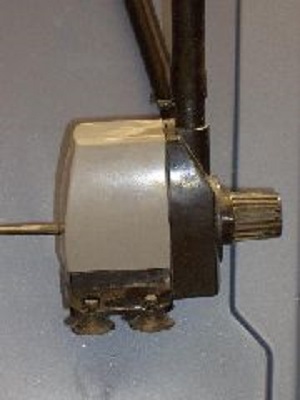There are three types of hydroponic pumps available; submersible, non-submersible and what I term, semi-submersible. A submersible sits and pumps completely submerged in the nutrient solution, a non-submersible is an external unit outside of the nutrient solution and a semi-submersible sits in the solution to pump but the top of the pump must remain dry.

I do not personally think very much of the semi-submersible pump. I purchased one with my first pre-made hydroponics system and within a half hour it fell into the water and destroyed itself. It was a miracle I wasn’t electrocuted. If you have never purchased a hydroponics pump there are some simple steps to take that will help you make a good choice.
The first thing you need to determine is how much nutrient solution you wish to pump. To do this you need to figure out how much nutrient solution will be in your growing container that is filled with growing medium. Let’s say hypothetically that your growing container is 20 inches long by 16 inches wide by 8 inches high. The height is measured from the bottom of the container to the top of the growing medium which will be about even with the middle of the drain outlet in an ebb and flow system. The formula is:
20 x 16 x 8 = 2560 cubic inches
Divide this by 1728 (12 x 12 x12) to convert to cubic feet.
2560 / 1728 = 1.48 cubic feet
Growing medium takes up volume but different types of mediums take up different volumes so as a rule of thumb, rockwool takes up 20% of the volume of a container, clay pellets, 30% and pea stone, 80%.
So, if we use pea stone, which is a good choice for a large container due to its density because it means less nutrient solution to deal with, we will take the 1.48 cubic feet and multiply it by 20%. Since it takes 80% of volume the remainder is water which is 20%.
1.48 x 20% = 1.48 x .2 = around .3 cubic feet. Since 7.5 gallons of water are in 1 cubic foot, 7.5 x .3 = 2.25.
This means that our container filled with 8 inches of pea stone will hold 2.25 gallons of water so you want to choose a hydroponic pump that will pump 2.25 gallons of water into the growing container in about 12 minutes. This is a general estimation only; you want nutrient solution into your growing medium quickly but not quickly enough to disturb plant roots.
We need 2.25 gallons pumped in 1/5 of an hour so 2.25 x 5 = 11.25 gallons per hour or GPH. Since most pumps are rated above 100 GPH you would think you’re covered, right?
Wrong! We must consider ‘PSI’ and ‘Head’. PSI refers to the power of the pump and head is the distance in feet from the pump to the input to the growing container.
How to Rate Pump Capacity
Follow these steps to determine the specifications for a hydroponic pump.
As an example, suppose we have a system that needs a pump capable of delivering 11.25 GPH or gallons per hour. Now suppose the length of the tube from the pump to the growing container inlet is 3 feet. As we are browsing online, we find a pump rated at:
120 GPH @ 1 foot head with 2 PSI.
Would this pump serve our needs? It would seem so on the surface so let’s make sure. A rough rule of thumb is to double the PSI to determine the length of ‘head’ at which a pump will pump 0 GPH. This pump is rated at 2 PSI at 1 foot head so at 4 feet head it will not work. This example has 3 feet head and 120 GPH at 1 foot head leaves another 3 feet for GPH to drop off to nothing.
So, 120 / 3 = 40 meaning a 40 GPH drop for every foot of head from 2 feet onward. With a 1-foot head this pump will pump 120 GPH, with a 2-foot head; 80 GPH, 3 foot, 40 GPH and 4 foot; 0 GPH.
Since this example reflects a 3-foot head we can expect a 40 GPH capacity from this hydroponic pump. If we subtract another 5 to 10 GPH for growing medium resistance and tube size, we can realistically only expect 30 to 35 GPH. Since we need 12 GPH we are pretty much covered.
If after looking at a pump’s capacity and determining whether it would fit your system or not and you are still in doubt always go with the more powerful pump and you will not be sorry.
Larry Maki is an avid, self-taught hydroponics gardener with a passion for alternative types of gardening.
Related Articles & Free Email Newsletter Sign Up
A Hydroponic Wick System is Easy to Build and Great for Beginners
How to Maintain the 4 Most Important Parameters for Hydroponic Nutrient Solutions
What to Grow and What Not to Grow in a Hydroponic Greenhouse




Comment here